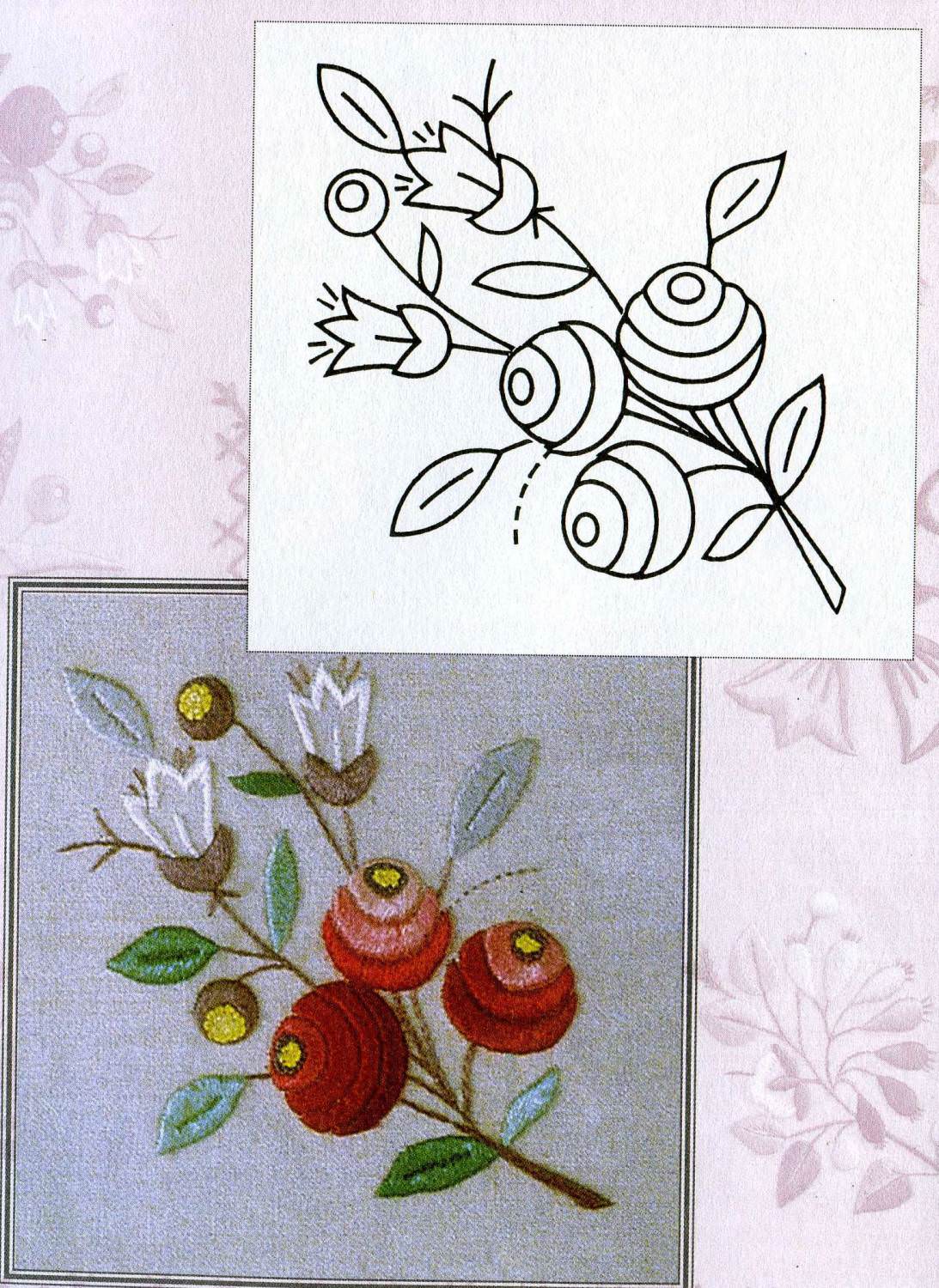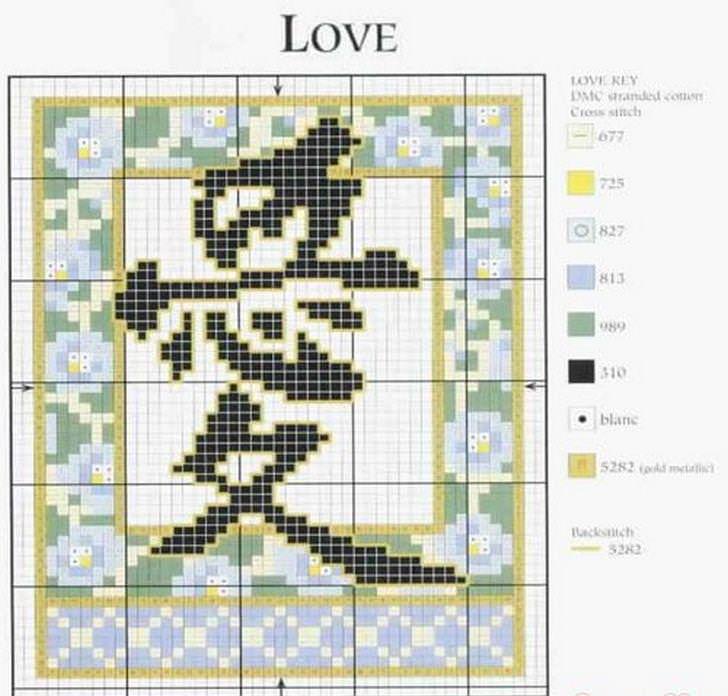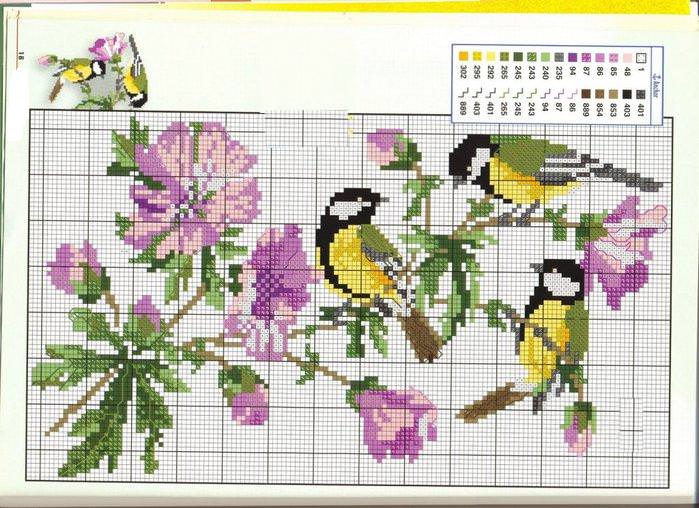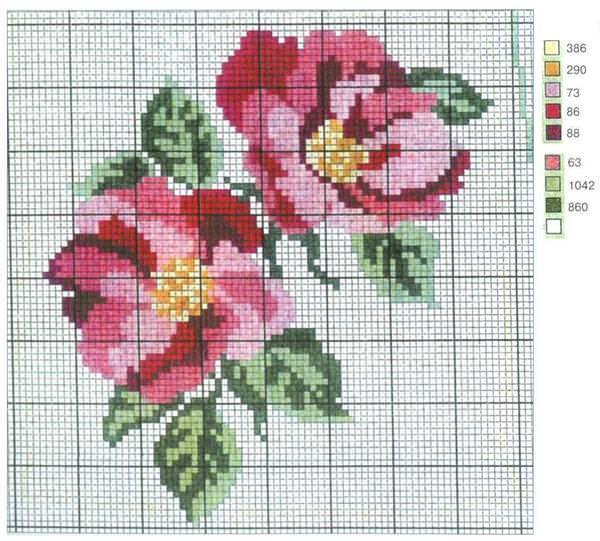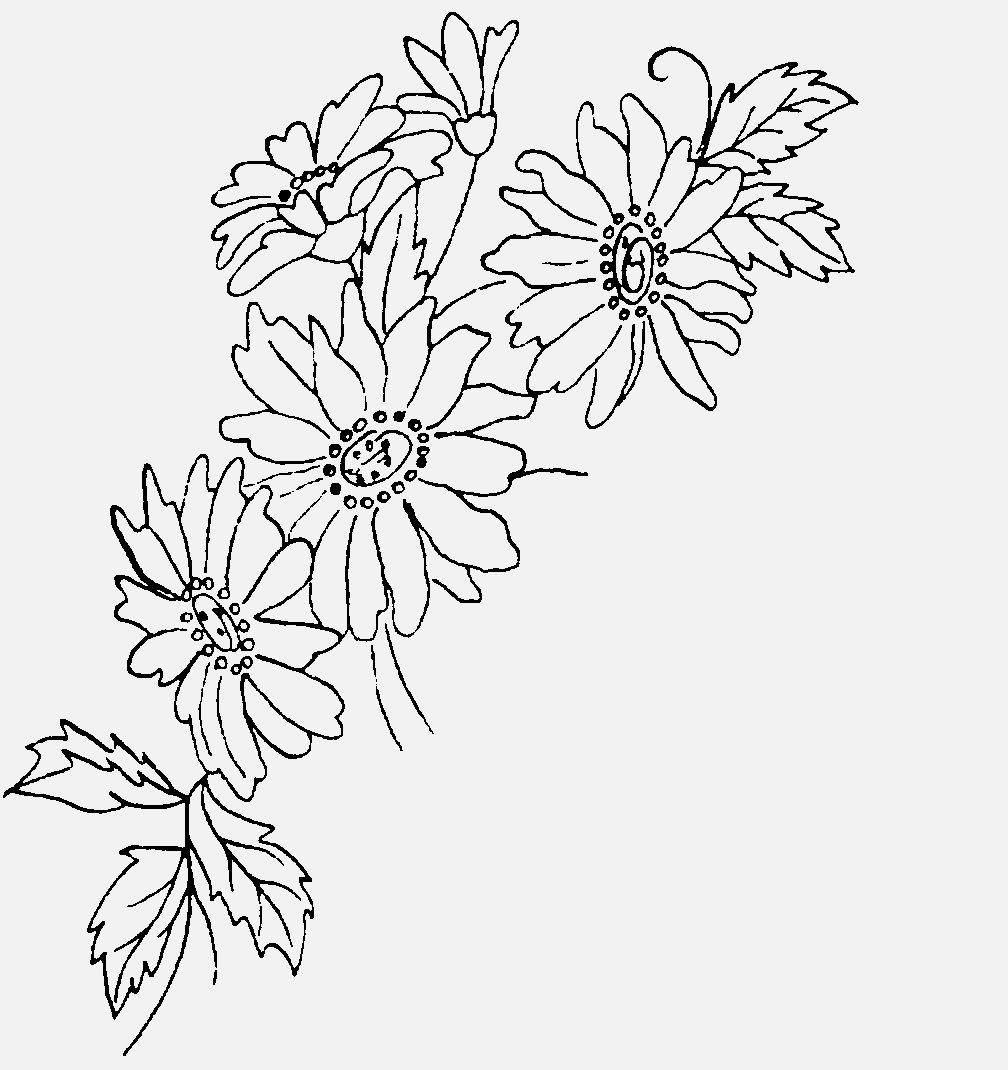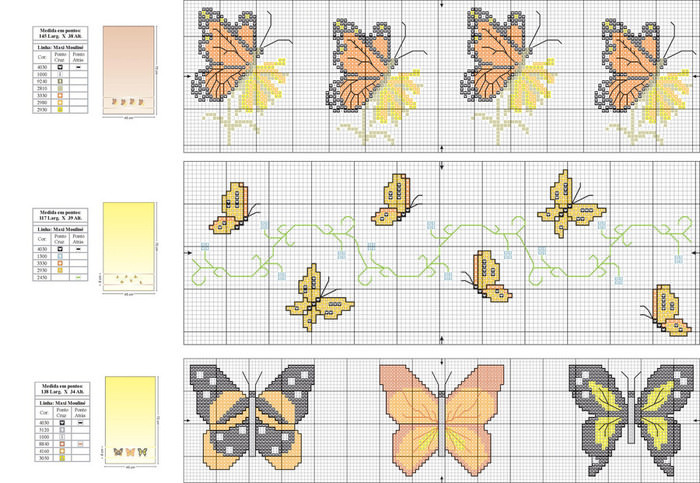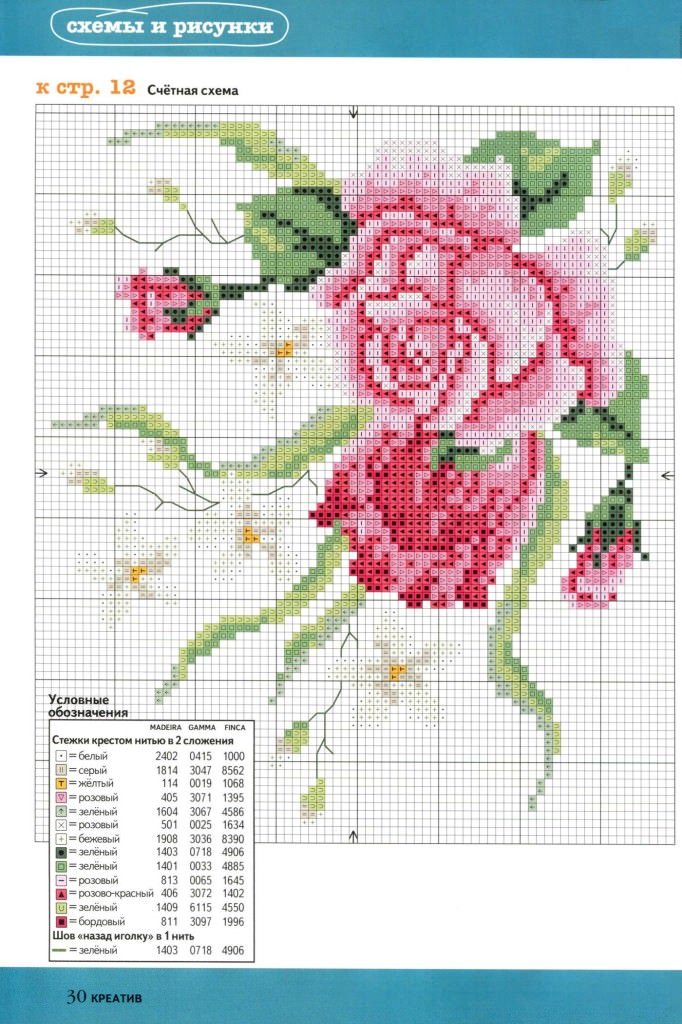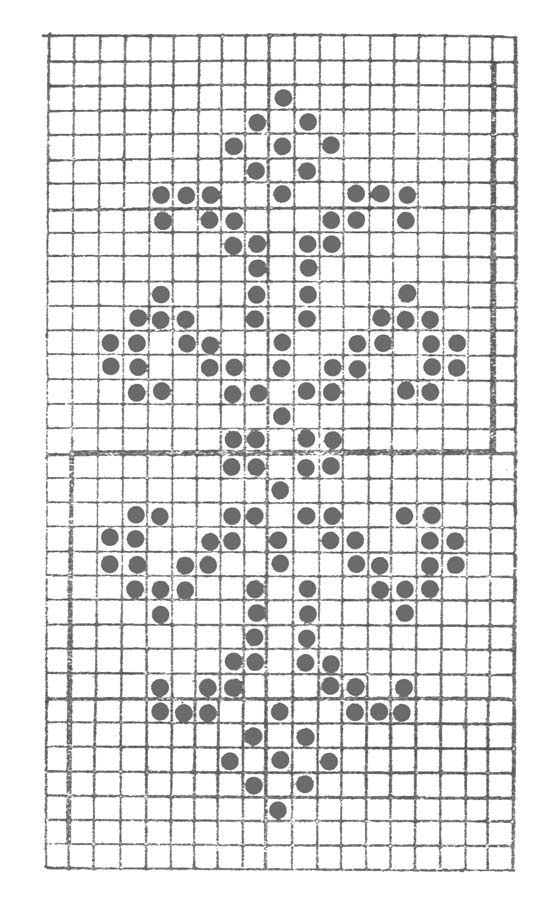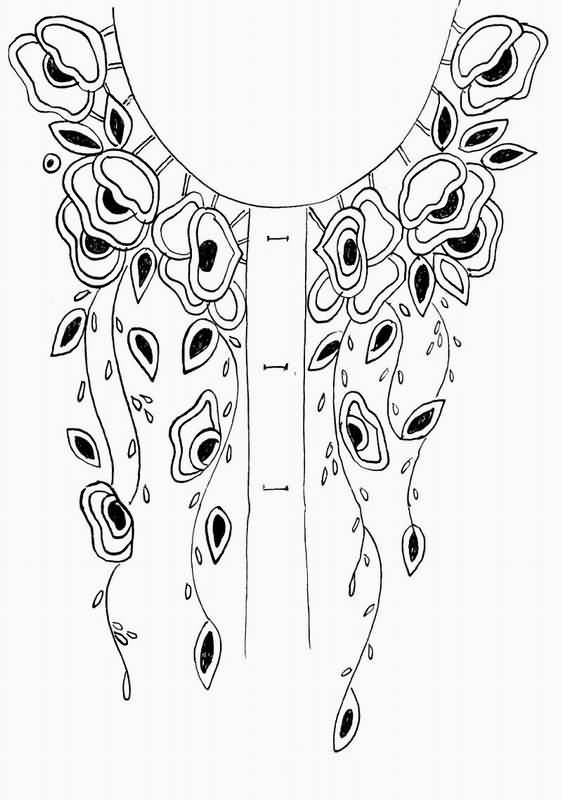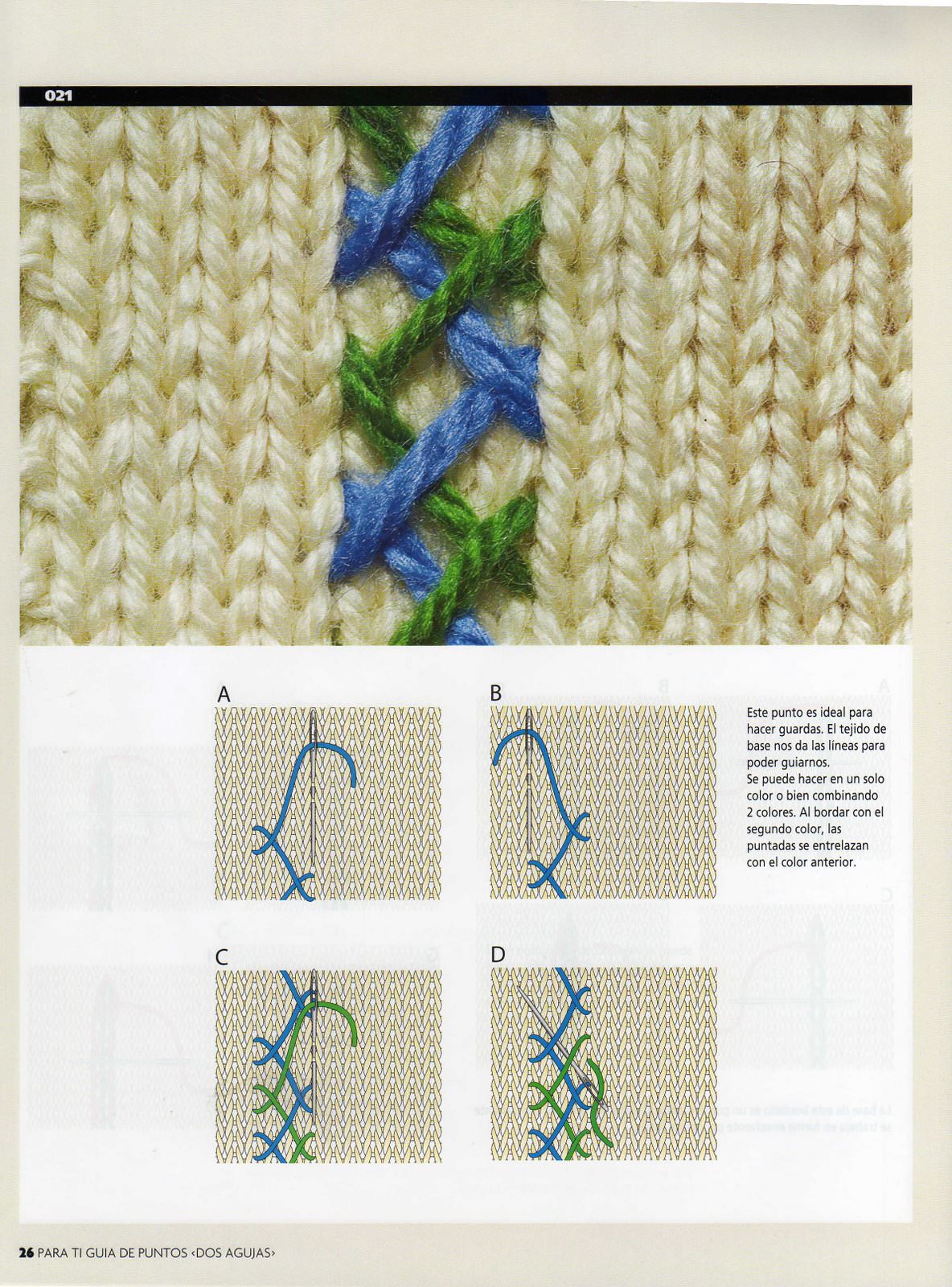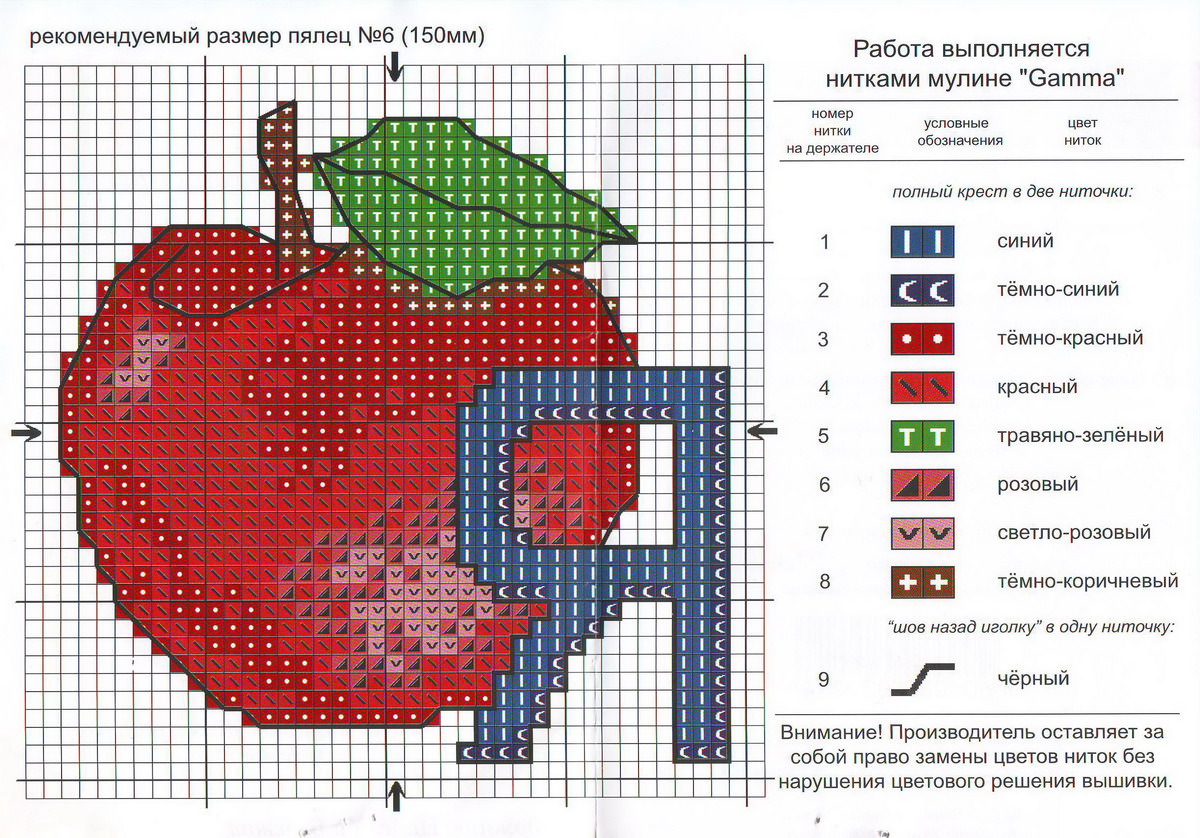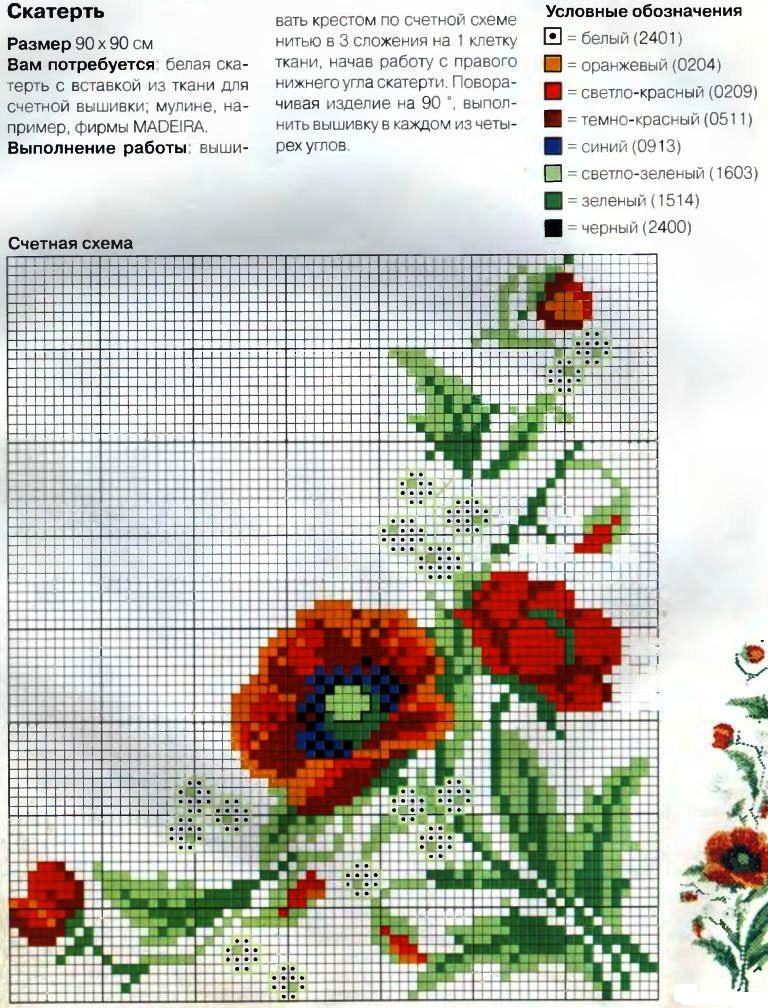
Embroidery knitwear: decorate the clothing with their own hands (scheme)
Content
- Materials and embroidery rules
- Transfer pattern on fabric
- The choice of thread
- Selecting seam
- Embroidery knitwear
- embroidery schemes
Today, you can find rare masters whoWe are used embroidery for knitwear. But that has not lost its relevance and novelty. Embroidery on jersey - it's a great way to draw attention to a simple product and make it unusual. But to execute it is not so easy, and before you start to practice, it would not hurt to get acquainted with the secrets of skilled handy people.

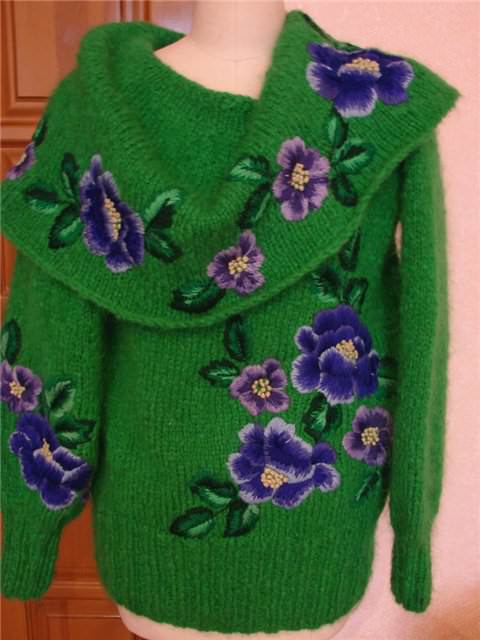
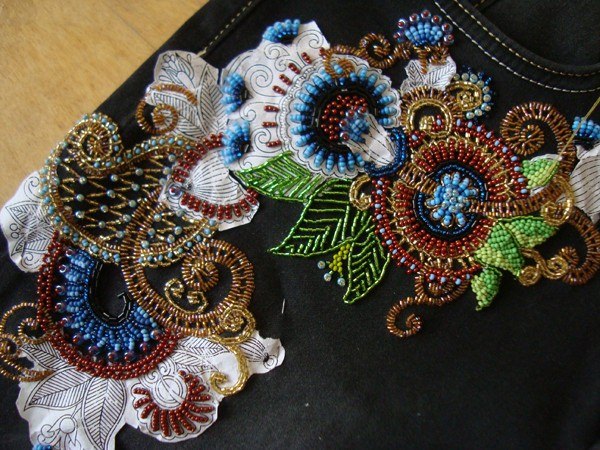
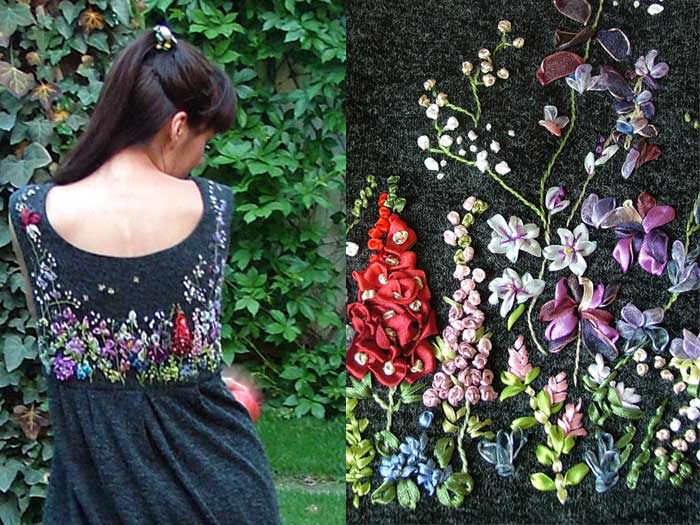
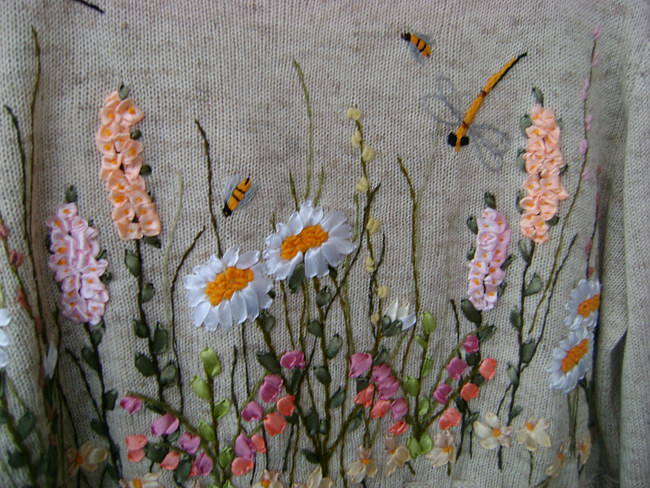
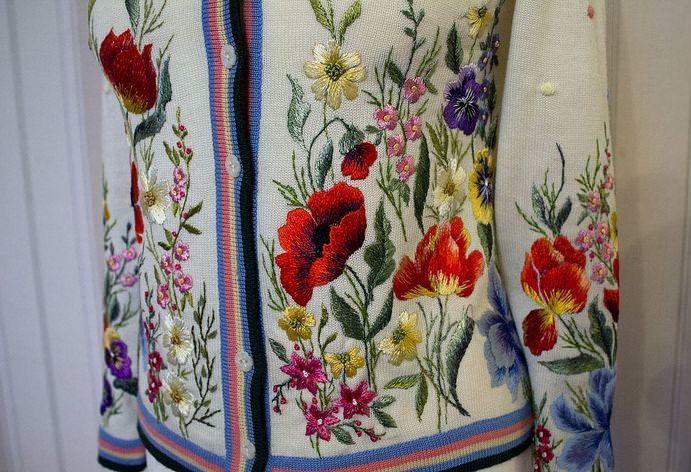
Materials and embroidery rules
To work brought pleasure, and the resultyou happy, you need to choose the right scheme and all the necessary crafts supplies. And, of course, can not do without the proper mindset, because you will hard work.
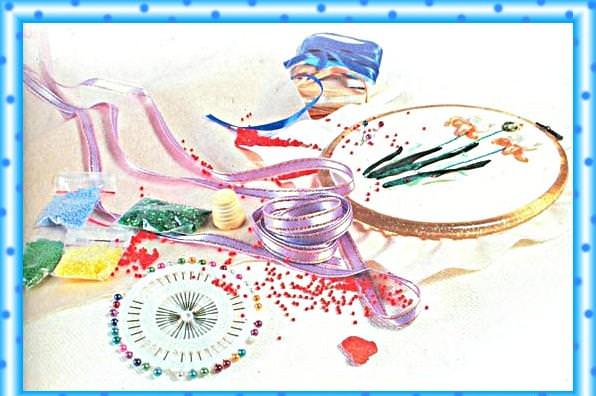
So, to work on embroidery jersey you need the following materials and tools:
- knitted fabrics;
- large eye needles;
- threads for embroidery and for basting;
- tracing paper;
- pencil.
In order to get a satisfactory result if the embroidery jersey is necessary to observe the following rules:
- Pick up a thread for embroidery, the thickness of which will correspond to the thickness of the yarn from which the related product itself;
- do not use threads, which can be shed on the jersey. Check them out on the color stability before use.
Transfer pattern on fabric
To get started you need to create clear boundariesyour drawing, which must be translated into the fabric pattern. Since the knitted fabric may have a different density, the translation circuitry and methods may vary.
If you have to work loose hand-knitted,it is necessary to use tracing. First image is transferred to it, and then put the tracing paper on the jersey and easy basting stitch sewn to the canvas. Then you need to outline the contours of a thread of contrasting color schemes and tear tracing. If you want to clearly indicate the contours of the figure, you can further go on it stalk seam.

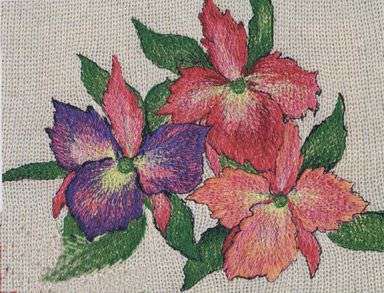
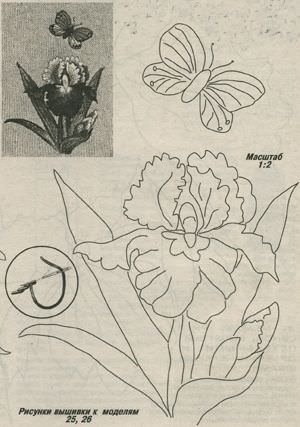
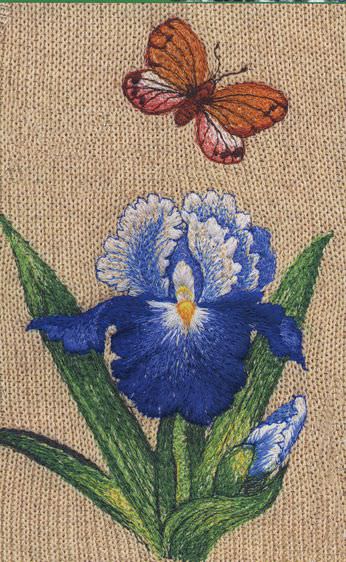

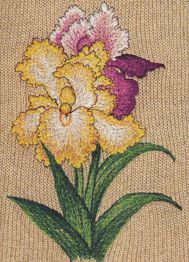
Embroider a bit hard on the loose knits becausestitches can fall, but this can be avoided if you make a gauze or Non-woven substrate. After the work is finished, the substrate edge trimmed.
If you are using manual or machine knitslarge density, as we do, then proceed as a little differently. Initially still move drawing on tracing paper and baste along the contour of the scheme. And then do the basting in a grid with a mesh size of 10 x 10 cm. This will help keep the web safe and does not shift during embroidery.
Using a sewing machine prostrochite contour drawing, taking care not to pull fabric. Before you begin to remove the embroidery basting thread and tracing.
If embroidery is done on a dark jersey, thenThere is an interesting way to put it the necessary patterns. To do this, grab a polymeric tracing paper, place it on the product and make a thick needle holes in the circuit diagram. Further tracing sew basting stitch to the web. And on top of tracing paper applied to a concentrated soap solution. When it dries, it will remain on the canvas clear contours that will be embroidered on them the desired patterns. If for some reason a trace remains visible after the operation, it is easy to remove by stripping.
The choice of thread
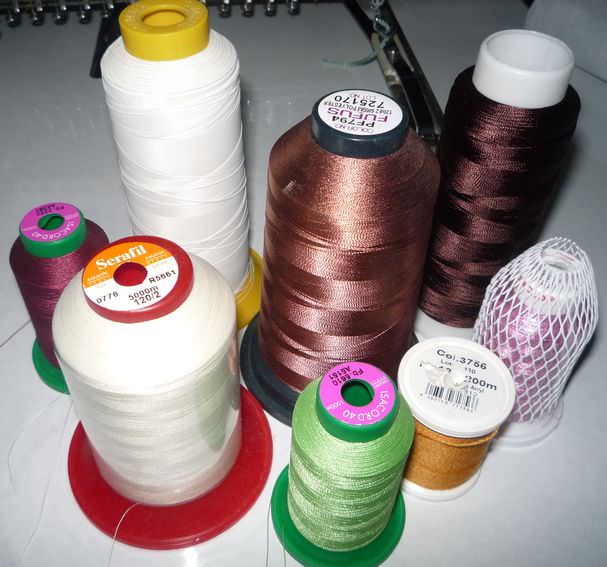
Embroidery knitwear separates the strands of the typethe material from which they are made, they may be in woolen, synthetic or silk. The main thing that they were sufficiently pliable, soft and well-laid down on canvas. It is better not to use cotton and viscose yarn. Some of them are too smooth, and can make the tough knitwear, and other chur torsion, and can go awry. Do not take too fluffy yarn, they also do not decorate knitwear.
If a thin jersey, you can embroider it evenfloss. But in our case, it is best to take a thread of the same quality as that of the product, then the pattern will look most natural. You can even create an effect as if the picture was already on the jersey. For this fit acrylic or rayon thread.
Selecting seam
Stitches can be used for any jersey. For example, it may be a seam of those that are used for woven fabric. But for the most part of the joint choice depends on what scheme or pattern you want to embroider. The seam can emphasize the texture of knitted fabric. If you take a knitted sweater, as in our case, it is better to embroider a loop stitch, as it closely follows the pattern of knitted fabric.


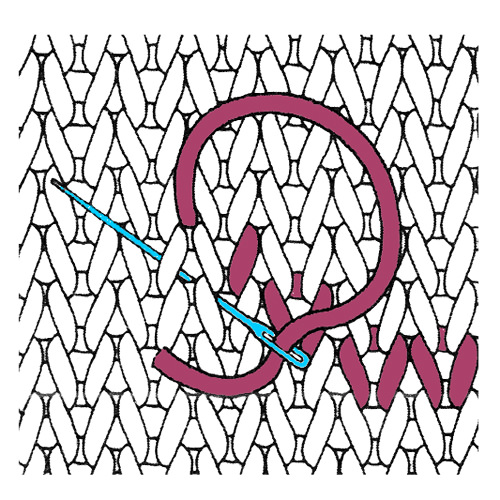
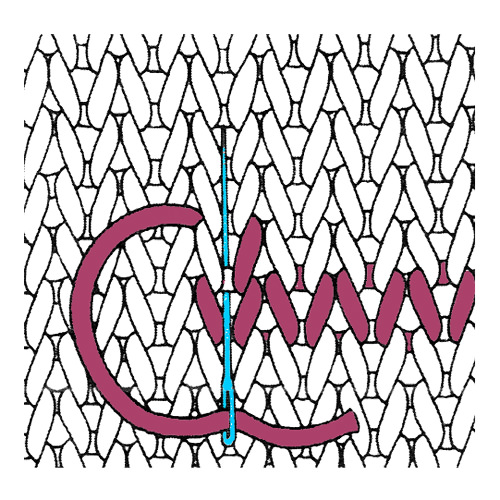

But if your jersey is more subtle, it is better to embroider his embroidery or cross-stitch or stitch finishing "goat". The figure made such a seam, not a burden jersey.
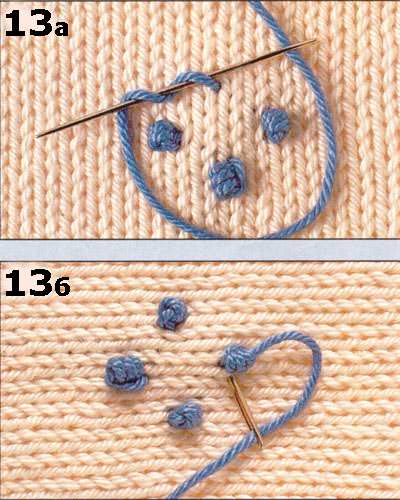
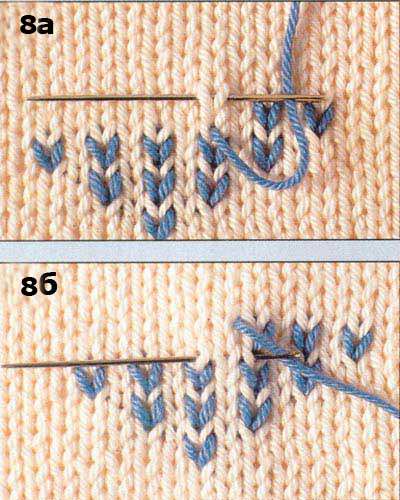
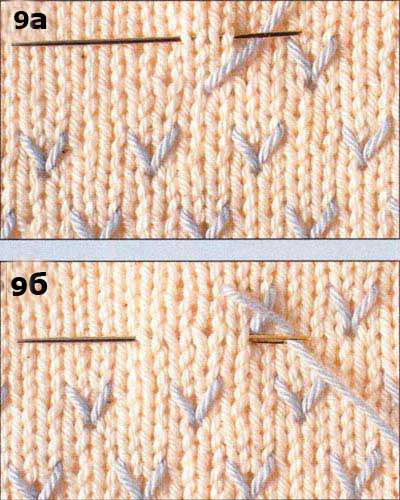
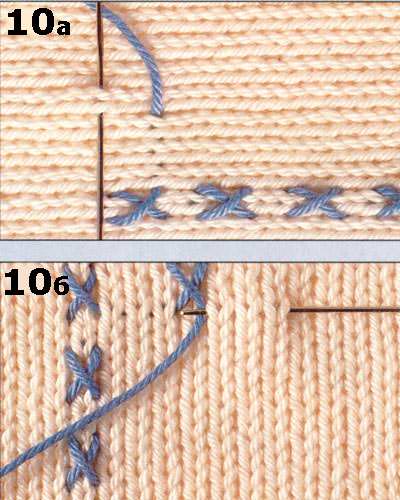
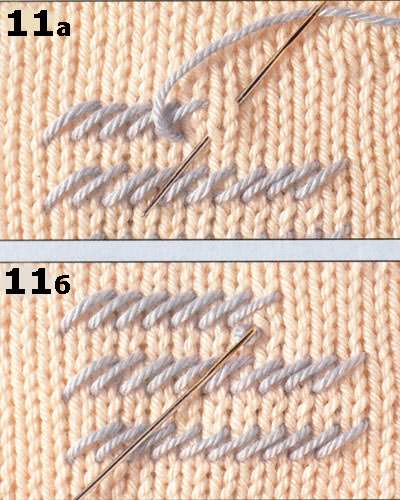
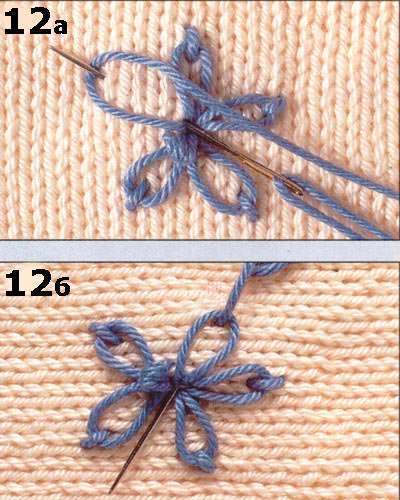
Embroidery knitwear
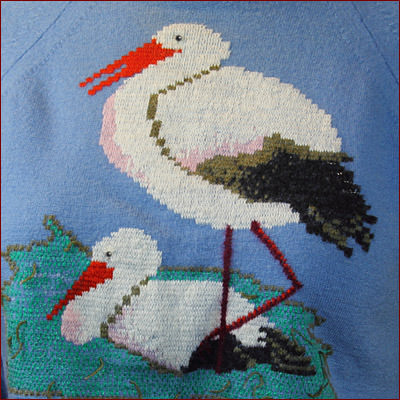
Embroidery knitwear can be performed by anyknown seam. Be sure to use a backing fabric, this will help avoid the contraction pattern. To embroider such wonderful herons, as in the photo, we will use the seam "loop in the loop." It is very simple, and it can be performed on any embroidery knitwear.
First you need to take into account that one cell willcomply with one loop. It is very convenient, and for this reason is often an embroidery on a different jersey executed cross. Thus, the choice of scheme will not be a problem for you.
We find on our scheme and the widest placeWe begin to embroider from there. It is necessary to bring the thread under the loop, we have to sew and put a needle from right to left over that loop. Pass the thread. Then print a needle in a place where you it worked hard and at the same height insert the needle under the next loop. You have a loop. In the same way all sewn product, according to the figure that you have caused.
Embroider one color first, then takeanother and so on. It is not necessary at the same time try to embroider several needles with different threads, as they are on the wrong side may confuse and spoil your work.
Care jersey after embroidery 
So we have to get ready sweater with a pattern. We are convinced that the selected string does not shed, so the jersey washable. But it should be done properly. By following these recommendations, you can easily save a new thing, and the bright pattern:
- before soaking jersey, be sure to loosen it on the wrong side;
- Use detergents for knitwear;
- Do not rub or squeeze the thing, wiping her hand;
- it is not necessary to wash knitted with other products;
- temperature of the washing water must not be knitted more than 30 degrees. So you avoid stalling wool and knitwear not lose elasticity;
- knitwear, where there are several colors, as we have, it is not necessary to soak;
- in the car wash mode is to be sensitive.
When finished washing, do not remove the sweater and gently squeeze it. Then put it in a towel, Wrap and allow excess moisture to be absorbed.
Drying should be carried out on a flat surface, away from radiators.
To iron a sweater you need from the wrong side, making sure that it is not stretched. iron heating temperature should be low.
We have learned to carry out embroidery on jersey,decorating knitted pattern. And now you can do something similar with other products associated with their hands or bought in the store. The patterns are very easy to pick up on the internet or even invent their own.
